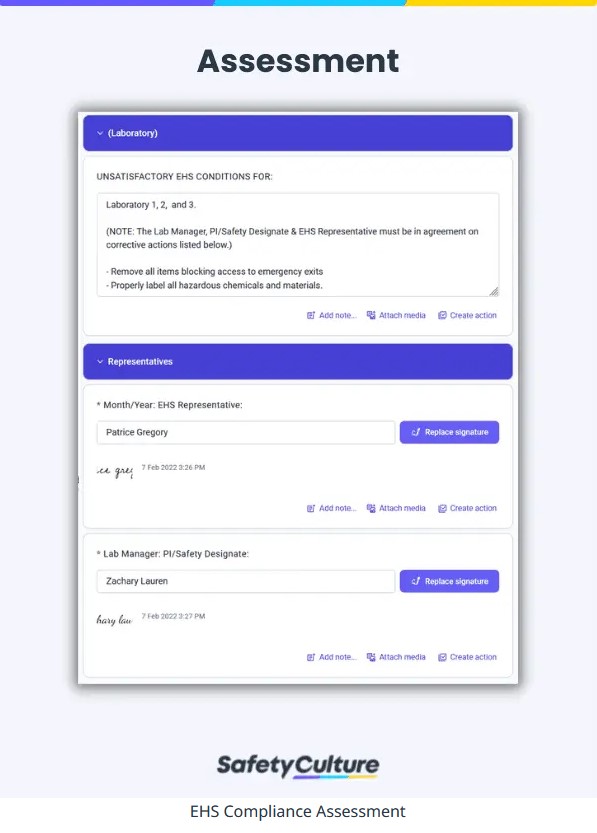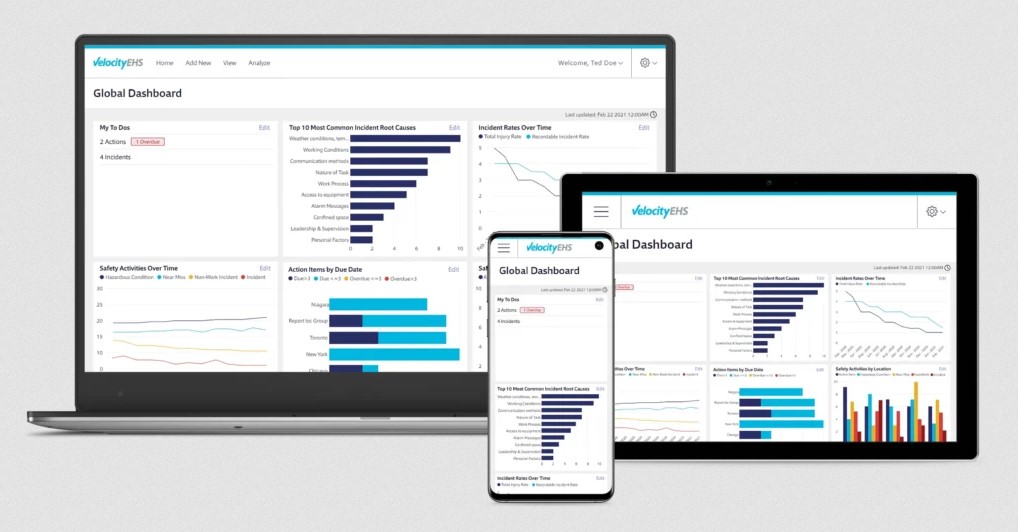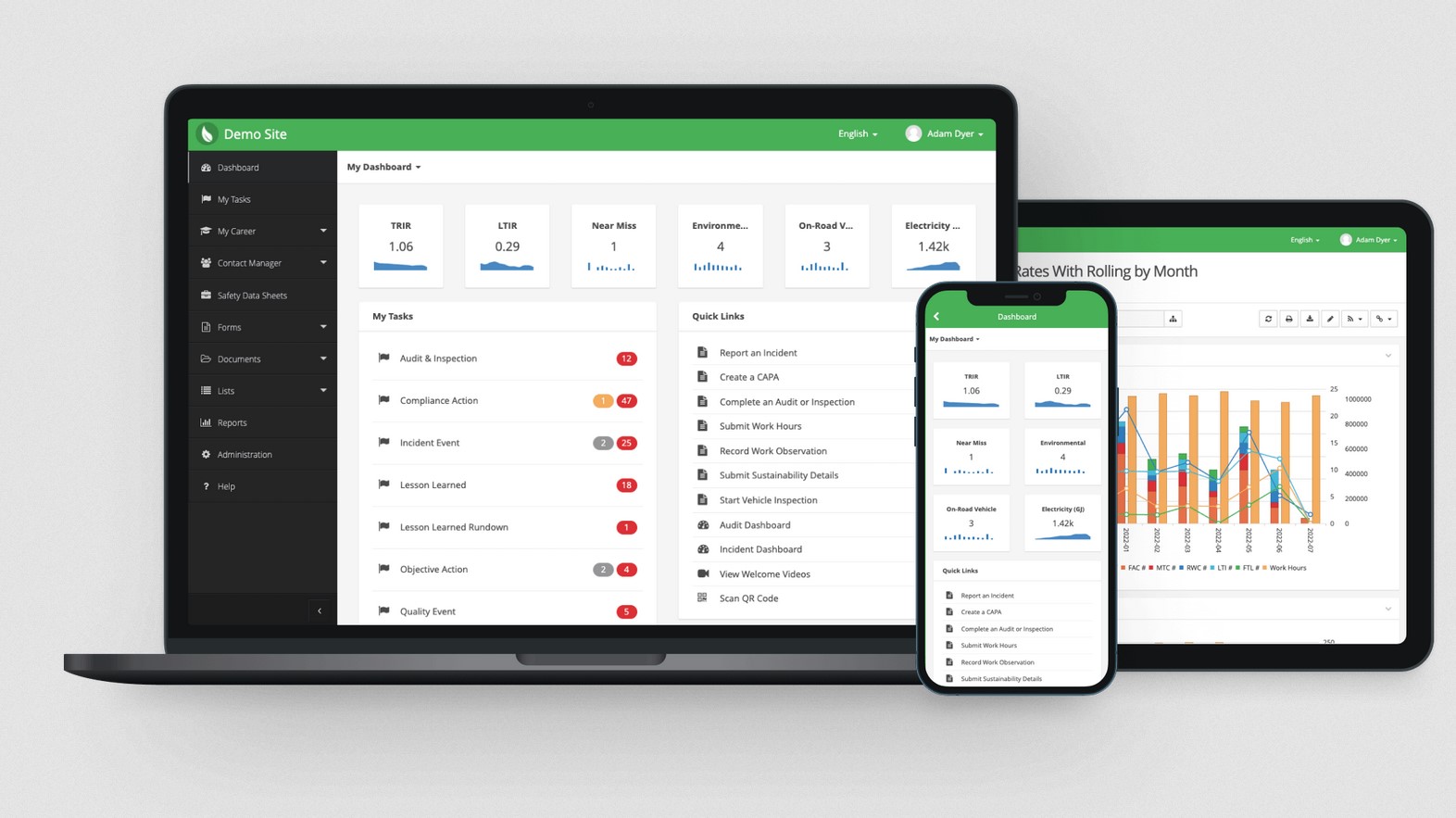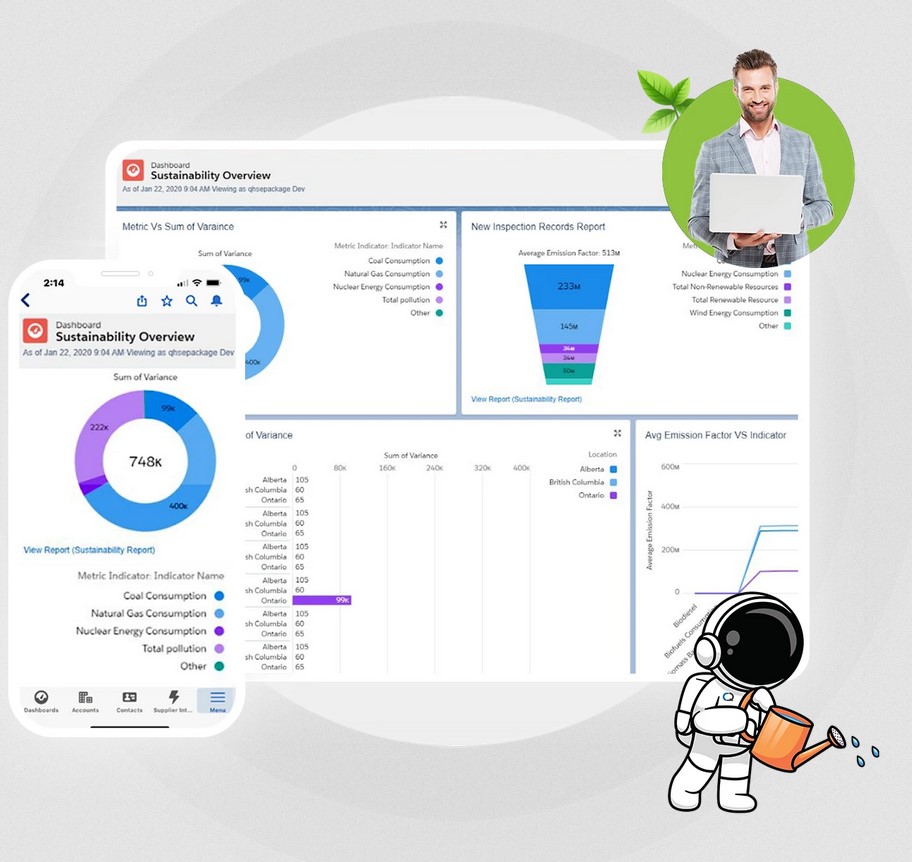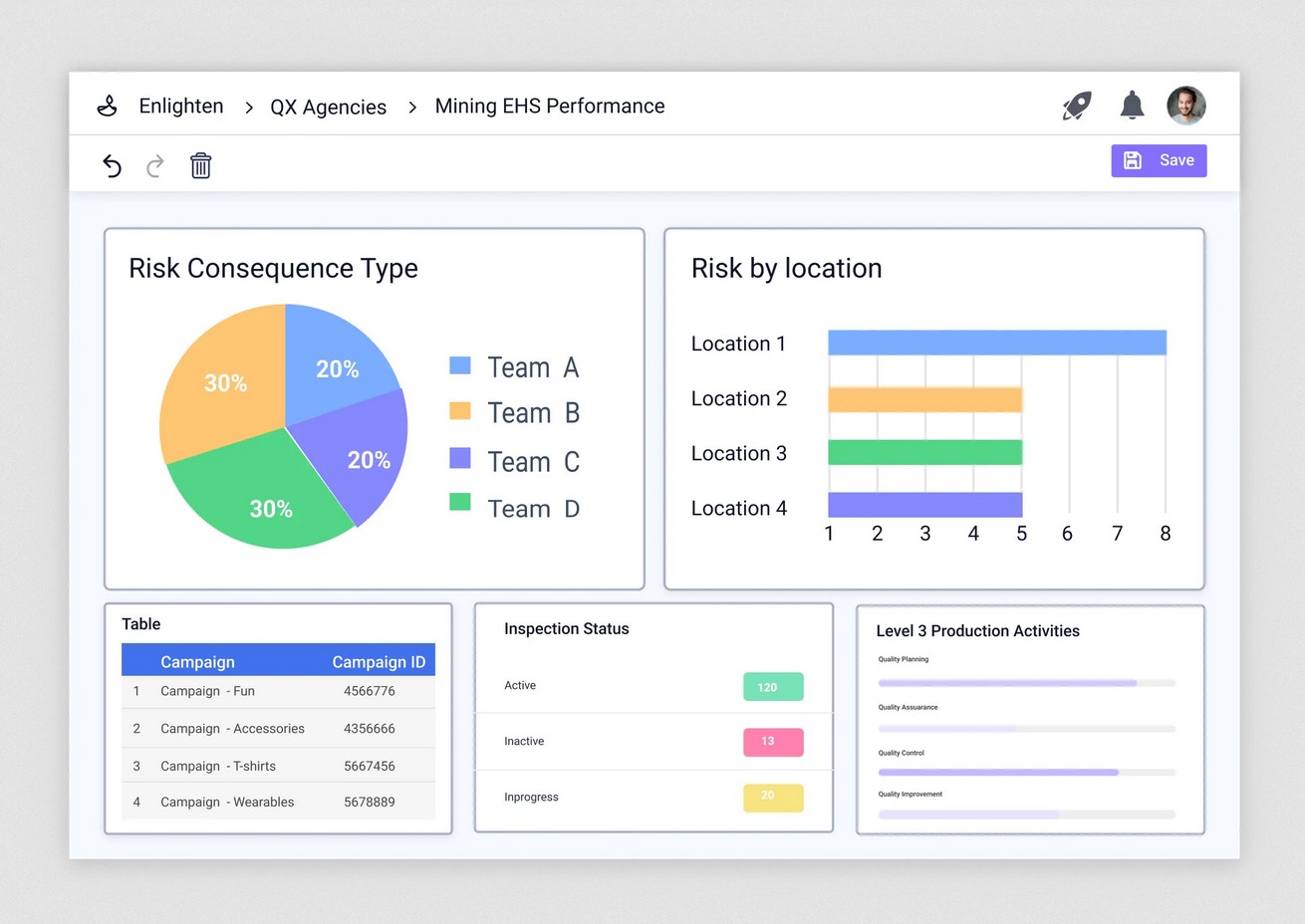Employees are the lifeblood of an organization, and ensuring their health and safety are paramount for business continuity. Moreover, it’s every organization’s responsibility to take care of its employees and the environment in which they operate. To further reiterate this importance, governments worldwide also mandate organizations to take care of these aspects through regulations.
Environmental, Health, and Safety (EHS) audit is a mandatory regulation that ensures a safe and healthy workplace. It also helps identify potential issues and hazards that organizations can fix before they become a disaster for employees and the environment.
Below is the best EHS audit software:
- SafetyCulture A safety management software that enables organizations to enhance their health and safety performance while meeting EHS compliance.
- VelocityEHS An AI-powered ESG and EHS management software for global enterprises.
- EHS Insight A comprehensive EHS software platform that helps you manage incidents, audits, and inspections to ensure compliance with EHS standards.
- ComplianceQuest A unified EHS, PLM, and QMS platform that uses intelligent automation to help compliance.
- Axonator A no-code mobile-first workflow automation platform that helps with EHS compliance.
To learn more about this mandatory regulation, this article explores EHS audits, their importance, and how you can comply with them. We will end with a detailed review of the top EHS audit software tools to help you pick the best fit.
What is EHS Audit?
An EHS audit assesses an organization’s health and safety processes and policies to ensure they are comprehensive to protect its employees. Often, organizations establish EHS departments to meet these guidelines and make the organization an attractive place for top talent.
Typically, an EHS audit checks the following:
- Do the existing processes meet the prevailing EHS regulations and corporate benchmarks?
- Are there any potentially negative impacts on water, soil, and air due to the organization’s activities?
- Are there any health or safety concerns for employees due to the prevailing workplace environment or activities?
By answering these questions, EHS audits point out the discrepancies, and you can take remedial actions to plug these gaps.
Importance of EHS Audits
You may wonder why your organization needs these EHS audits. Besides meeting the mandatory compliance, here are other reasons to make these audits an essential part of your operations.
Risk Identification
The primary benefit of an EHS audit is its ability to identify risks in a workplace. Using this information, you can make your environment safer and healthier for your employees. Also, this information and the subsequent actions prevent organizations from accidents and other hazards.
Cost Savings
With EHS audits, you can proactively address issues and save money on legal costs. Moreover, EHS audits avoid compliance penalties and fines. The reputation and brand image are also preserved, eliminating other reputational and financial losses.
Efficient Resource Usage
Workplace safety is closely tied to resource availability. A safe and healthy working environment requires financial, human, and technological resources for regular monitoring and improvement. Given the limitations of these resources, you must use them judiciously with informed resource planning and budgeting activities.
Employee Confidence
Organizations that follow EHS audits are deemed safer for employees. As a result, more top talent are likely to join EHS-compliant organizations because their safety is guaranteed. Due to this inherent trust, some of the most experienced and knowledgeable people would prefer to be a part of an EHS-compliant organization.
Stakeholders Trust
Other than employees, EHS audits also boost trust and confidence in other stakeholders like investors because they know that their investments will not be spent toward unproductive legal costs. Also, customers and vendors prefer to work with companies that prioritize employee safety and health.
Due to these multiple benefits, many organizations are conducting EHS audits regularly.
Steps for Conducting EHS Audits
Next, let’s focus on how you can conduct EHS audits to ensure compliance without disrupting employee productivity and operations.
Step 1: Understand Regulations
As a first step, know what regulations are mandatory for your organization. Also, check if you want to extend compliance to any voluntary EHS standards or frameworks applicable in your region.
Once you understand the regulations and their provisions, create the appropriate controls, and map the two. During this phase, set the scope of the audit and make sure to have a buy-in from the upper management for its smooth execution.
Note that this first step requires extensive planning that lays the foundation for a fruitful audit outcome.
Step 2: Collect Data
Once your controls are ready, it’s time to collect data and documents. If you have an internal team responsible for audits, allocate different departments to each employee and assign them the responsibility of gathering data from the respective departments. You may even want to notify managers and other responsible process owners to provide timely access to data and documents,
Step 3: Evaluate the Data with the Controls
The next step is to evaluate the existing data to see if they align with the established controls. You can break down the steps to achieve smaller milestones before combining them to get a larger picture. For example, you can assess employee knowledge and awareness about the existing EHS provisions and map it with the required training requirements.
Similarly, evaluate the administration and implementation to see if they match the regulatory requirements. Review each action against the established standards for alignment. You can also check the safety standards of the equipment and materials used in the workplace. Such a streamlined process will help identify non-compliance gaps.
Step 4: Take Remedial Actions
Based on the discrepancies and gaps found in the previous step, you can take the necessary action to fix them. Continuously evaluate the impact of your actions and take additional action when needed. Keep sight of the final goals established during the first step, which can include compliance and ensuring the health and safety of your employees.
Note that these steps are continuous and necessary for EHS audit compliance.
As you can see, these steps are complex and difficult to implement manually. Also, manual implementations always have the chance of errors and risks of non-compliance, which could result in costly fines. To avoid such downsides, consider using a well-developed EHS audit software.
Next, let’s evaluate the best EHS audit tools to help you pick the right one for your needs.
Our Methodology
We evaluated many EHS compliance against the following criteria to arrive at the above list:
- Data digitization and support for multiple data formats.
- Compliance reporting.
- Mobile accessibility.
- User-friendly interface.
Best EHS Audit Software
Now that you know the basics of EHS audits, let’s review each tool in depth.
1. SafetyCulture
SafetyCulture is a health and safety management platform that keeps your employees safe in their workplace. It continuously monitors your physical environment to identify risks, so you can mitigate them before they impact your employees. It also ensures compliance with evolving EHS regulations.
Source: SafetyCulture
Below are SafetyCulture’s EHS features.
Improved Productivity
With SafetyCulture, you can create a safe and healthy environment for your employees. By prioritizing their well-being, you increase employee morale and with the right environment, you can enhance their productivity. Moreover, SafetyCulture can minimize the risk of accidents and injuries with its proactive maintenance processes.
Ensure Compliance
I determined that SafetyCulture ensures compliance with the leading EHS regulations and frameworks. This platform makes it easy to establish controls, lay down instructions and processes, and standardize the procedures for compliance. Moreover, when any regulation changes, you can adapt the existing workflows to match them.
Understand the Root Cause
You can get comprehensive visibility into your workplace and the root causes of non-compliance. SafetyCulture analyzes completed inspections, reported incidents, sensors, and asset history to determine the potential risks and hazards before they impact your organization. With this information, you can proactively fix issues.
Overall, SafetyCulture can prevent incidents, promote a safety culture, and meet EHS compliance.
Pros:
- Versatile to meet different EHS standards.
- User-friendly interface.
- The Logic Flow feature helps create reusable templates.
- Regular checks.
Cons:
- It is hard to embed images in audits.
- Limited personalization.
2. VelocityEHS
VelocityEHS is an EHS and ESG compliance tool designed for global enterprises to help reduce costs and maintain workplace safety. Also, it provides complete control and visibility to enterprises, helping them mitigate risks and boost compliance. With this tool, you can reach your EHS and ESG goals faster.
Source: VelocityEHS
Here’s a look at how VelocityEHS can help with compliance.
Incident Management
Despite the best-laid plans, incidents can happen, and a system for managing these incidents is also essential to compliance. I see that VelocityEHS simplifies incident reporting and tracking in your workplace. Its mobile app makes it easy to record and track all incidents while its analysis capabilities centralize and standardize views for easy understanding. It also comes with a hazard reporting feature that sends alerts if any hazards are identified during analysis.
Extensive Audits
VelocityEHS centralizes data gathering and analysis to provide the required insights. It also helps understand the quality of your facilities and programs. You can use this platform to audit third-party standards, ensure adherence to corporate frameworks, create checklists and track their progress, assign actions and follow-up, and collect evidence for audits.
Training and Learning
Regular training is essential for EHS compliance, and VelocityEHS offers a comprehensive training program that works well for all employees in any organization. Designed by experts, this training includes 850+ micro-learning courses across multiple languages to serve a wide employee base. Moreover, its Learning Management System (LSM) is well-developed while its reporting and analytics offer real-time insights into employees’ progress. You can even collect feedback and tailor future courses based on the responses.
Due to these features, VelocityEHS is a one-stop shop for EHS compliance and to gain the benefits that come from it.
Pros:
- Ideal for managing hazards in the workplace, including dangerous chemicals.
- Highly accessible across multiple devices.
- Supports customization.
- Captures data across different formats.
Cons:
- Report generation can be better.
- Steep learning curve.
3. EHS Insight
EHS Insight is a management software is ideal for all organizations that want to monitor the health and safety of their workplace while complying with the prevailing EHS regulations. With this tool, you can improve operational efficiency, reduce costs, and protect your employees.
Source: EHS Insight
Let’s now peek into EHS Insight’s features.
Audit and Inspection Management
With EHS Insight, I noticed that you can keep all your documents, records, and other data in a central place. This approach saves time and effort for your employees as they don’t have to shuffle between emails, paper records, and documents to find the required information. Moreover, they can meet compliance and audit requirements and back them with evidence.
Comprehensive Compliance
EHS Insight eases compliance with regulatory, voluntary, and corporate standards. Its automation and AI capabilities reduce the time and effort required for compliance processes like investigation, monitoring, and training. Furthermore, you can automatically schedule tasks, assign responsibilities, and track their progress.
Training
As training is essential to meet compliance, EHS Insight offers a highly customizable and interactive training platform that works well for all employees. Its integrated Learning Management Software (LMS) tracks each employee’s progress and generates comprehensive reports about completion rates. Such information can enable you to meet compliance.
In all, EHS Insight is a streamlined compliance platform that fits all organizations while providing the required customization.
Pros:
- Excellent training module.
- Tracks events, insights, audits, and more.
- Most processes can be paperless.
- Easy configuration.
Cons:
- Limited customization.
- Reporting can be better.
4. ComplianceQuest
ComplianceQuest is a streamlined compliance tool that automates processes required for PLM, QMS, EHS, and ESG compliance requirements. It is a cloud-based solution that handles product lifecycle, quality and safety management, and environmental aspects of your operations. Also, it inherits all the attributes of a Salesforce platform.
Source: ComplianceQuest
Below are ComplianceQuest’s EHS capabilities.
Efficient Compliance
Built on the Salesforce platform, ComplianceQuest is a unified platform to streamline safety processes, mitigate risks, and ensure adherence to existing regulations and standards. It also has many built-in practices and automated processes to make compliance more efficient with fewer resources.
Safety Programs
I learned that ComplianceQuest offers many safety programs to increase collaboration and create a safety culture across your organization. You can even monitor the progress of each program and track its effectiveness for your organization.
Comprehensive Management
With ComplianceQuest, you can get comprehensive visibility into compliance processes and operations. As a result, it reduces the chance of downtime while you can detect hazards early. Its advanced analytics and customized reporting are other advantages.
In all, ComplianceQuest can change your approach to EHS compliance and help you gain the benefits with efficient resource usage.
Pros:
- Intuitive user interface.
- Excellent customer support.
- Good reporting and data analytics.
- Comprehensive controls.
Cons:
- Workflow automation requires improvement.
- Permissions and access controls can be better.
5. Axonator
Axonator is a comprehensive compliance platform that creates a safety culture while reducing the likelihood of penalties due to non-compliance with EHS regulations. With this tool, you can do safety audits, record safety violations, and reduce the dangers associated with any workplace.
Source: Axonator
Risk Analysis
Axonator is a no-code platform that helps build a safety culture. It uses mobile forms to gather data from your employees’ workplace, including field areas, and consolidates them for analysis. Based on the findings, it assesses and prioritizes risks, and communicates them through alerts. It also provides contextual information to help you quickly fix the issues.
Hazard Protection
I could see that Axonator makes it easy to identify physical, chemical, and biological dangers at your workplace. It creates digital checklists that you can work through to ensure protection against these hazards. In particular, it works well in mining operations, where you can track incidents and take necessary action to protect your employees from mining disasters. You can also use them to comply with internal policies and EHS regulations.
Dynamic Dashboards
You can use Axonator’s dynamic dashboards to understand the strengths and weaknesses of your EHS compliance programs. This tool automatically populates real-time data into your dashboards for data-driven decisions and to get a buy-in from your C-suite.
Overall, Axonator helps create a safe work environment for your employees, regardless of where they work.
Pros:
- Easy to use.
- Good customer support.
- The mobile app is super helpful.
- Excellent insights.
Cons:
- Validations can improve.
- Does not support document capture.
Thus, these are the best EHS audit software to streamline compliance with EHS regulations while creating a safe and healthy workplace for your employees.
Bottom Line
Environment, Health, and Safety (EHS) regulations mandate that organizations adhere to environmental, workplace safety, and employee health guidelines. Non-compliance with these audits can attract penalties, fines, and reputational loss. To avoid these repercussions, organizations conduct regular EHS audits and take steps to meet EHS guidelines.
However, a manual approach is error-prone and inefficient, and this is where automated EHS audit compliance tools come in handy. This guide discussed EHS audits and their benefits to your organization. We ended with a detailed review of the best EHS audit tools, and we hope this information helps you select the best one based on your internal and external compliance requirements.

